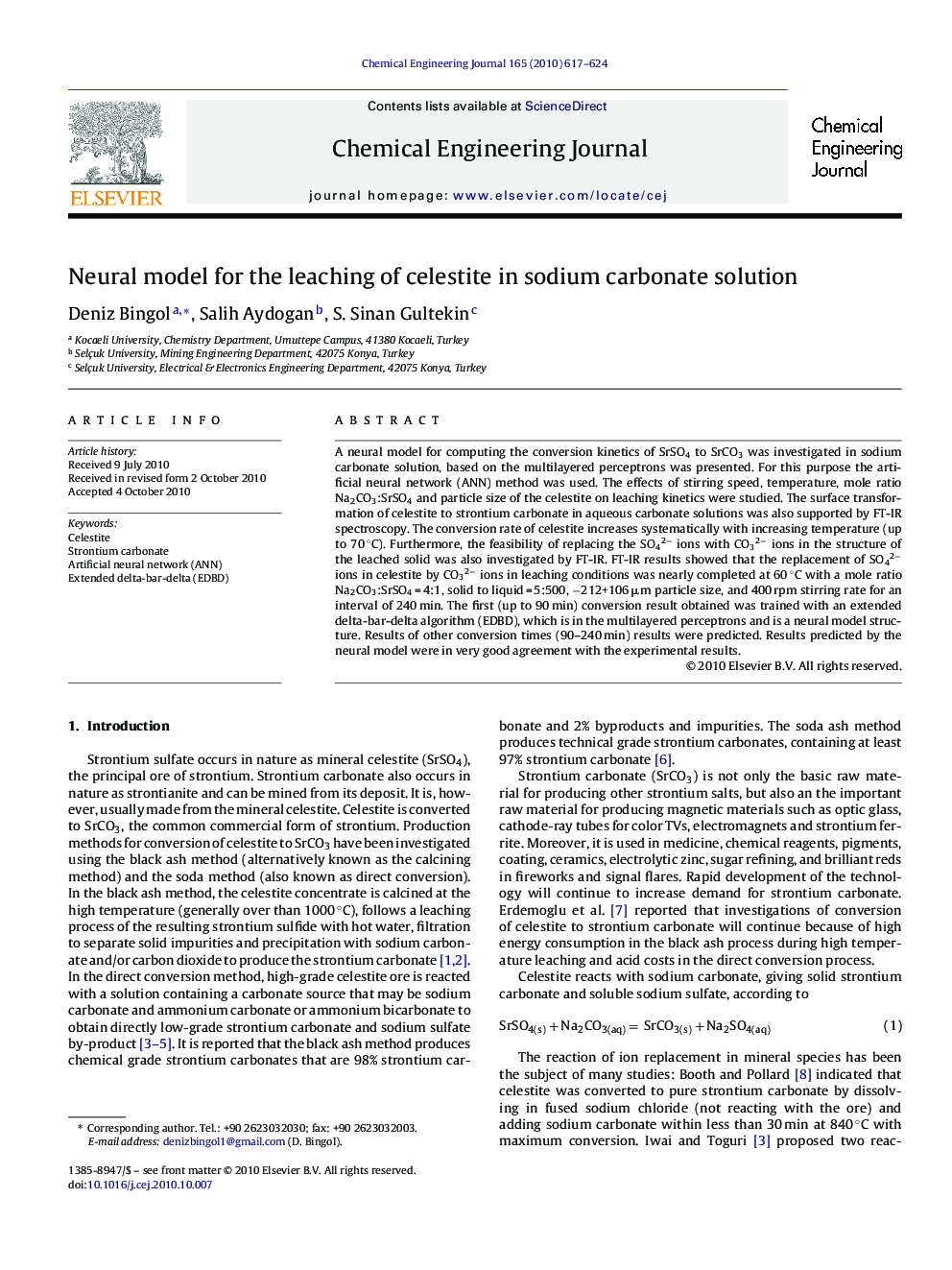| Article ID | Journal | Published Year | Pages | File Type |
|---|---|---|---|---|
| 151742 | Chemical Engineering Journal | 2010 | 8 Pages |
A neural model for computing the conversion kinetics of SrSO4 to SrCO3 was investigated in sodium carbonate solution, based on the multilayered perceptrons was presented. For this purpose the artificial neural network (ANN) method was used. The effects of stirring speed, temperature, mole ratio Na2CO3:SrSO4 and particle size of the celestite on leaching kinetics were studied. The surface transformation of celestite to strontium carbonate in aqueous carbonate solutions was also supported by FT-IR spectroscopy. The conversion rate of celestite increases systematically with increasing temperature (up to 70 °C). Furthermore, the feasibility of replacing the SO42− ions with CO32− ions in the structure of the leached solid was also investigated by FT-IR. FT-IR results showed that the replacement of SO42− ions in celestite by CO32− ions in leaching conditions was nearly completed at 60 °C with a mole ratio Na2CO3:SrSO4 = 4:1, solid to liquid = 5:500, −212+106 μm particle size, and 400 rpm stirring rate for an interval of 240 min. The first (up to 90 min) conversion result obtained was trained with an extended delta-bar-delta algorithm (EDBD), which is in the multilayered perceptrons and is a neural model structure. Results of other conversion times (90–240 min) results were predicted. Results predicted by the neural model were in very good agreement with the experimental results.
